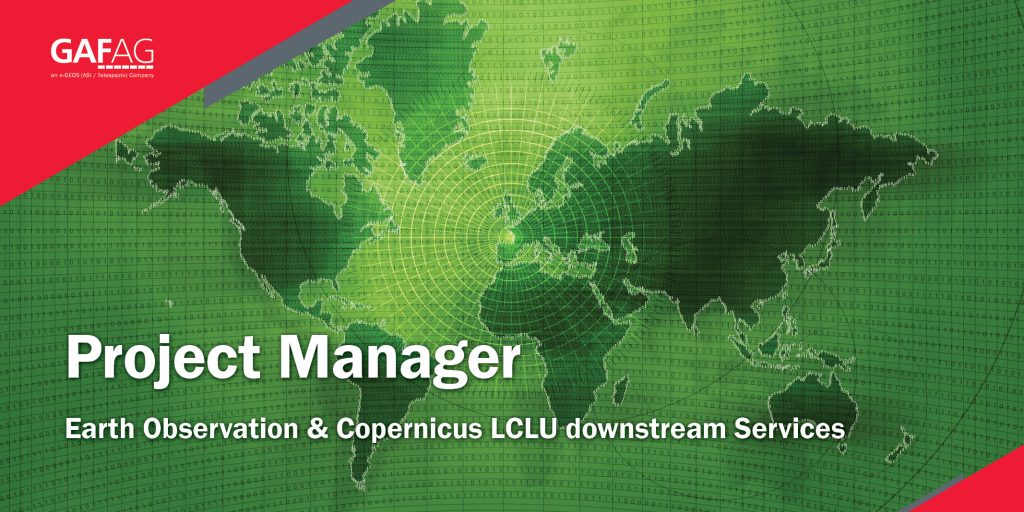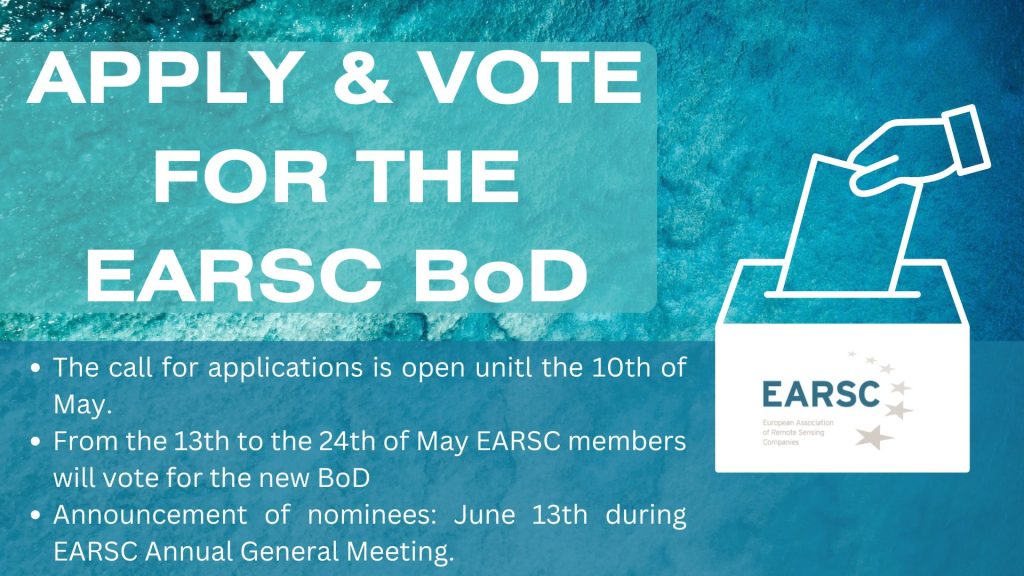
The voice of the Earth Observation
Industry
Barents bloom, Sentinel-2A - processed by ESA, CC BY-SA 3.0 IGO

Discover the largest European
Earth Observation Network
Lake Balkhash, Kazakhastan, Sentinel 2 - processed by ESA, CC BY-SA 3.0 IGO

EARSC promotes the understanding
of our Planet for societal benefits
Brussels, Spot 5 Sqtellite - Airbus Defence and Space
EARSC 4 Pillars
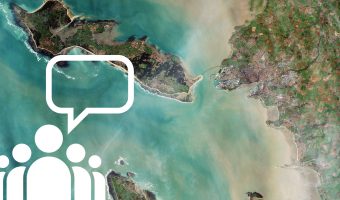
Representing the Members
The core pillar of our activities is to support and promote our members. We achieve this goal mainly through projects which we undertake (see projects). Members’ views are gathered through a series of ad-hoc working groups dedicated to important topics. We inform our members through a monthly report and a dedicated portal about important news and information, as announced bid opportunities – and dedicated e-mails for key items.
Read More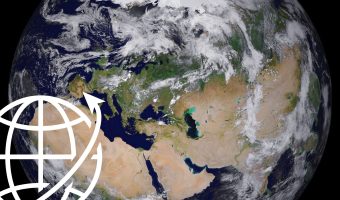
Market development & Internationalization
EARSC is engaged in a wide range of activities to develop new markets and business opportunities for our members. Our strategy is to engage users, identify needs and stimulate demand for European EO services both in Europe and abroad with complementary commercial and geographical approaches.
Read More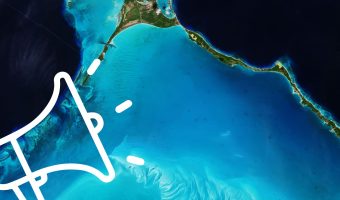
Promoting the industry
EARSC employs a range of sophisticated digital tools to promote the European EO sector. EARSC has three main digital tools which cover creating a shared vocabulary (EARSC TAXONOMY) , providing a common space to find EO companies, and a common space to discover ‘online’ EO services.
Read More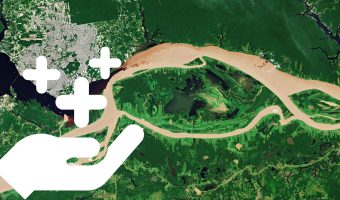
Showing the value of Earth Observation
The Earth observation sector delivers a wide range of social and environmental and economic benefits to citizens of Europe and the world. To properly and consistently value these impacts, EARSC leads the Sentinel Benefits Study (SeBS) project in which we measure the total societal impact of products and services coming from Sentinel satellite data.
Read MoreEARSC NEWS
NERC award Bluesky aerial photo scanning project
(Sep 22). Remote sensing and aerial survey specialist Bluesky has been awarded another project by the Natural Environment Research Council (NERC) to create a digital archive of scientific images from the organisation’s Airborne Research and Survey Facility. Bluesky will scan the new photographic images taken by NERC’s airborne survey unit, using state of the art
What is Kopernikus?
What is Kopernikus? The Kopernikus initiative has two main objectives: the provision of sustainable, precise and reliable information concerning the environment and citizen’s security, produced under EU control and tailored to the needs of a wide range of users; the creation of massive opportunities for European companies, in particular small- and medium-sized enterprises (SMEs), which
PlanetObserver launches a new digital Earth imagery database
PlanetObserver, one of the leading suppliers of satellite imagery data, announces the creation of a new seamless global digital Earth imagery database in natural true colours with a resolution of 15m/pixel. Here are a few figures about this new Earth observation tool : 8,600 scenes collected from the civil observation satellite Landsat 7 ETM+, a
EU publications
EU Research for the Environment 2007-2013 This brochure summaries environmental research funded by the European Union and is divided in two parts. The first provides the context of environmental research – the historical roots and the political framework as well as an introduction to environmental research in the Seventh Framework Programme (FP7), under the theme
GMES Land User Newsletter
The seventh issue of the GMES Land User Newsletter has been edited by the ETC/LUSI in order to provide the user of land related information with news from and about GMES and to support communication among the stakeholders. The European Space Agency and the European Commission are sponsoring this newsletter. Download here the GMES Land
Kopernikus represents a concerted effort to bring data and information providers together with users
Stakeholders can better understand each other and make environmental and security-related information available to the people who need it through enhanced or new services.
Fifty Years of Earth-Observation Satellites
Views from space have led to countless advances on the ground in both scientific knowledge and daily life The former Soviet Union’s launch of the world’s first artificial satellite, Sputnik I, heralded the era of satellite remote sensing. Since that epic moment on October 4,1957, hundreds of Earth-observing satellites have followed. Half a century of
DMCii pioneers new framework for satellite imaging quality control
Remote sensing solution provider DMCii’s Chief Scientist, Dr Steve Mackin, has pioneered a new approach for deriving quality control indicators from Disaster Monitoring Constellation data. The new framework, which is being implemented by DMCii, holds great potential for quality control and consistency in multi-source imaging projects such as the European Global Monitoring for Environment and
Kopernikus, observing our planet for a safer world
The new name of the European GMES Programme (Global Monitoring for Environment and Security) has been unveiled: Kopernikus. The European Commission Vice President Günter Verheugen announced the name today at the GMES 2008 Lille forum. Europe is presenting Kopernikus at the forum as the second flagship of the European Space Policy following Galileo, the first
European Space Policy Progress Report 2008
Following the adoption of the Space Council Resolution in May 2007, this Report provides an overview on the main progress achieved in the first year of the implementation of the European Space Policy (ESP), as elaborated jointly by the European Commission and the Director General of the European Space Agency (COM212). The need to establish
UK government urged to improve national space capabilities
By Rob Coppinger The UK government is being warned that while 90% of its military capabilities rely on satellites, the country’s capability in space systems is waning, with a continuing reliance on foreign-owned orbital assets. In a 38-page report published on 14 September, satellite industry body UKspace calls for the creation of a robust national
FP7 Space Call
The objective of the FP7 space work programme is to support a European Space Policy focusing on applications such as GMES (Global Monitoring for Environment and Security), with benefits for citizens, but also other space foundation areas for the competitiveness of the European space industry. In the context of the FP7 Space Work Programme, the
Major European programme for the environment under the spotlight in Lille, France
ESA PR 38-2008. On 16 and 17 September, in the context of France’s presidency of the EU, Lille will play host to ‘Forum GMES 2008’ at the Grand Palais. The GMES (Global Monitoring for Environment and Security) programme has been set up to provide services relating to the environment, climate change, resource management, security and
Report Explores Use Of Earth Data To Support U.S. National Priorities
The nation faces challenges in utilizing Earth science information to manage resources and protect public health, according to a NASA-sponsored report issued Monday by the U.S. Climate Change Science Program. The report examines the computer-based decision support tools that many government agencies use to make predictions and forecasts in areas such as agricultural productivity, air
GeoVille to perform World Bank study in Dakar, Senegal
GeoVille Information Systems has been contracted to perform a climate change adaptation study for the City of Dakar in Senegal. The World Bank financed project will employ high resolution satellite and a range of local data to map the extent of natural hazards and determine the degree of vulnerability of urban settlements. The results of
Sleek Probe To Map Earth’s Gravity
ScienceDaily (Sep. 10, 2008) — The European Space Agency is launching a new satellite to map variations in the Earth’s gravity field with unprecedented accuracy. The satellite will give UK scientists vital information about ocean circulation and sea level change needed to improve climate forecast models. The Gravity field and steady-state Ocean Circulation Explorer (GOCE)
MEMBERS NEWS


